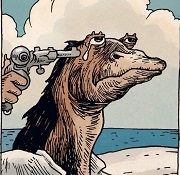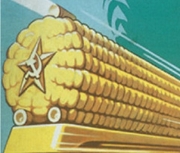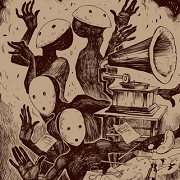- lobster shirt
- Jun 14, 2021
-

|
MONTHS BEFORE Karen Cheung’s The Impossible City came out, I met her in Hong Kong after years of circling each other’s orbits of mutual friends. When the subject of her book came up, she said, almost right away, “You don’t have to read the first twenty pages. I’m telling everyone not to.” Months later, I was faced with two choices: respect her agency as an author, never read the first twenty pages, and exist in the world as she wants it to be; or read the first twenty pages and text everyone I know to read this book but to skip the first twenty pages, which are not for us.
It’s fine, but it’s not for us: this is what we often conclude in group chats where we send each other links to the latest books and coverage about our hometown, usually published in widely respected foreign outlets by foreign correspondents or anglophone journalists who, by the nature of our work and social spheres, are also our friends or professional acquaintances in the region. We roll our eyes at trite symbolism, tired references, tone-deaf histrionics, or dramatic geopolitical spin, and then, having exhausted our private complaints, we retweet the article or order the book in question for our friends scattered around the world anyway. I can’t name the last memoir written in English by someone my age from Hong Kong that was published by a major English-language publisher; I don’t share the dewy sentimentality that emanates from Cheung’s personal writing, but I sent my friends her book because I know how a homesick person feels when they are reaching for lifelines that might bind them to a concrete place where, once upon a time, life happened.
Despite her confession about those opening pages, Cheung wanted to write a book for us, invoking a generational “we” throughout The Impossible City that can be delineated as the first generation that came of age after British colonial rule and grew up with a level of material stability built by our parents’ generation through the unrest and poverty of the 1960s and 1970s. University education, where English is the official teaching language, became more accessible, and a foreign education is even normalized in certain social strata. The internet made it possible to care more about Warped Tour and The O.C. than TVB gossip and local radio rankings. And like millennials across the world, ours is also a generation that has been structurally denied upward mobility.
It’s fine, but it’s not for us: this is what we often conclude in group chats where we send each other links to the latest books and coverage about our hometown.
Having written for a number of foreign publications (including the New York Times and Foreign Policy) in a language used by local elites, Cheung is all too aware of the common frustrations with anglophone accounts of Hong Kong, the perception of her complicit position as a native informant with access to Western institutions, and the double consciousness required to maintain distinctions—especially during the headline-making 2019 protests, when she feared she had been pigeonholed as Hong Kong’s “sad correspondent” while feeling shame about not having been out on the streets enough because of a bad hip condition. While she does not claim to speak for Hong Kong, the representation complex has preoccupied her writing career, and now, her book-length debut. Organized chronologically in three sections—a montage of episodes from childhood in part one; her teenage years in part two, which culminates in a tremendous essay about the Herculean effort of navigating Hong Kong’s mental health care system; and a zoom-out to sociocultural commentary and music reportage in the last third—the memoir documents the crevices where the personal and the historical overlap between the monumental years of 1997 (when Cheung was four) and 2021, the year after the undemocratic passage of the National Security Law announced a new era of indirect rule by the authoritarian government in Beijing. Cheung unspools the pain and the awkwardness of coming of age in a fissured environment, where the buttresses of home and identity are constantly destabilized, and time—the currency of youth, of romance, of governance—works against accumulating any sense of sustained normalcy.
Regardless of its autobiographical nature, The Impossible City is underpinned by a theoretical inquiry: “How do you write about the place you call home, in a language that is not your own?” Cheung appropriates and complicates a number of self-reflexive strategies that have been closely tracked by Sarah Brouillette, Mary Louise Pratt, and Weihsin Gui as features of the evolving postcolonial “autoethnography,” a form that differs from monophonic self-representation in that it is a multipronged collaboration wherein “colonized subjects undertake to represent themselves in ways that engage with the colonizer’s own terms . . . usually addressed both to metropolitan readers and to literate sectors of the speaker’s own social group.” Building on Graham Huggan’s notion of the “postcolonial exotic” as a strategic exoticism that “pervades postcolonial writing, as authors attempt to show that they understand the ways in which they are asked to represent the Third World or Global South to a presumably apolitical metropolitan audience,” Brouilette complicates these self-conscious authorial gestures in the work of an earlier generation of internationally acclaimed postcolonial anglophone authors that includes Salman Rushdie, J.M. Coetzee, and V.S. Naipaul. Gui, meanwhile, advances a reading of later postcolonial diasporic Southeast Asian writers, who make use of literary representation as a double-edged critique of their home countries.
Placing these works within the globalized field of literary production, where postcolonial anglophone writers often operate and find career success, Brouilette notes thatwriters’ anxiety tends to stem from the dissemination of their texts to reading communities accessing privileged metropolitan markets that are often (though not exclusively) Anglo-American in location and orientation. Writers are compelled to resist, justify, or celebrate precisely this aspect of the postcolonial field’s arrangement, in accordance with their own circumstances.
As autoethnography, Cheung’s mapping of Hong Kong in the forbidden first twenty pages aims to thwart the expectations of the foreign gaze, with the implicit promise that this time, readers can trust her to magnify the details that matter. But explaining geography in her own terms is still explaining geography, and to open a book this way mirrors how the story of Hong Kong typically begins (“ . . . on Possession Street, an elevated patch of land where the British fleet first landed . . . ”). It also creates a problem of scale that sabotages Cheung’s wish to escape from the representation mandate to write “about Hong Kong.” If we don’t expect someone who grew up in Brooklyn to tell us anything about Queens, why should we expect Cheung, who grew up in Kowloon, to explain the New Territories, a part of the city that barely figures into the rest of her story? At the same time, if the framing of the book suggests that the legitimacy of her story is predicated on her ability to make legible locales and feelings that are distant to Western anglophone readers (the basis on which Salman Rushdie’s Midnight’s Children won three Booker Prizes, by the way, according to the award’s former administrator), she undercuts this by tactically withholding translation of Chinese words and Cantonese phrases embedded throughout the book.
A journey that begins as a destination—the postmodernity of it all—remains unreconciled in the book’s structural ambivalence, which can be the most constructively read as “the necessary failure of the passionate striving for identity,” to borrow Horkheimer and Adorno. Cheung’s striving for (writerly) identity creates a stylistic unevenness that draws attention to the asynchrony between her alternating diaristic montages, written in the present tense, and her more distanced reportage, written in the past tense. It’s almost as if there are two books at once: a memoir of childhood, coming of age, and political awakening, and a collection of reported essays on the cultural scene. Short of space for aesthetically dignified maneuvers, the collaged approach is ultimately exasperating, selling short the postcolonial author’s capacity for both the candid intimacy of autobiography and the critical access to journalistic insights.
Cheung’s strength as an anglophone essayist has been her ability to gently synthesize personal, somatic experiences and broad social contexts. Yet, a lyrical strategy that is refreshing for Western metropolitan news readers or under-informed “Texas grandfather[s]” (her former news editor’s words) undermines the book’s potential to imagine a new audience at home—or one that feels at home. Having grown up being shamed for her locally irrelevant English abilities, Cheung has the common colonial malady of the belief that “to write in English, and, worse, to choose to write in English, the language of our colonizers, is an implicit betrayal of our mother tongue.” But if, at this point, we have chosen to wield the linguistic advantages of our multipolar condition—if we have consented to the haunting of Adrienne Rich’s decree that “this is the oppressor’s language yet I need it to talk to you”—then the betrayal is really not so much in writing in English, but in writing for a privileged sector of English-speaking audiences. As Cheung and her collaborator Holmes Chan discuss at length in one chapter of the book, the privilege of these readers is not just social or economic, but also acoustic:
Anglophone literature [in Hong Kong] gives [Chan] the sensation that he is overhearing. “It was the author speaking to somebody next to me about me, and I just happen to overhear this conversation, and of course the actual recipient of that conversation was a white guy. I was having myself explained back to me, but not directly to my face. The way to rectify that was to create a kind of writing voice that was speaking directly to me.”
Guilt and exasperation permeate Cheung’s writing. She wants to signal to her Hong Kong readers that she is one of them, she just happens to write in English; that she didn’t want to write about Hong Kong, she just wanted to write, without the intrusion of imaginary white readers and the paternalistic and chauvinistic local literary scene. But when she claims that “maybe this isn’t the book you expected to read: You wanted stories about ‘ordinary Hong Kongers’ and . . . quaint, exoticized ‘everyday’ characters . . . instead I gave you this,” she is still speaking to that imaginary white reader. The Hong Kong reader is straining to overhear and, worse, now forced to consider a void where there might have been none.
In another gesture meant to upset Western readers’ voyeuristic expectations for memoirs of the subaltern Other, Cheung belabors disclosures of often painful memories with reminders of the writerly prerogative to only reveal as much as she wants to. Again, this hollows out a defensive negative space that re-centers an absent reader who was either never there to feel the loss or too undeserving to be called out anyway. As Brouilette diagnoses, “The weight of many self-conscious gestures lies here, as writers respond to the idea that there is some essential fault involved in making one’s persona available for consumer access within a globalized industry. Where they are denied any claim to one kind of autonomy, they seek to negotiate another.” By over-tending to the anxiety of language as a performance of social power, Cheung ends up displacing language’s other power to imagine and to create.
Collaborating in the postcolonial exotic by returning the gaze and then becoming eclipsed by it, The Impossible City retreats into asymptotes and potentiality, yearning for a voice that never materializes. (Not to put too fine a point on it, but Cheung had wanted to be a music writer, and her strongest work has been in music writing.) Why, afforded the expansive space of a book, spend pages “getting angry over how Hong Kong was being written about in Western media or books about lives of expats that become Amazon-produced series, when I could use that energy to write about, say, contemporary Hong Kong bands . . . and the oeuvre of writers . . . whose works have defined Hong Kong literature and were being translated in recent years?” Cheung asks. Why indeed? What use is protest without cure? (What good is it to profit from self-criticism that doesn’t invest in structural change?) The question is an apt metaphor for Hong Kong’s tragic postcoloniality, but does it always have to end tragically?
The anxiety to justify that manifests as melancholia in The Impossible City limits the negotiation of new narrative ground in Louisa Lim’s Indelible City: Dispossession and Defiance in Hong Kong. Hong Kongers are “we” in The Impossible City but “they” for the most part in Indelible City, until the concept of a “Hong Konger” identity begins to unsettle Lim during protests against Article 23, the first rendition of a national security law, in 2003. As both Cheung and Lim have observed, Hong Kong identity has become intertwined with political activism in the new millennium. When the 2019 protests raged, Lim was confronted with the dilemma that her personal political allegiances might compromise her professional ethics.
Indelible City follows the trajectory of Lim’s childhood and subsequent journalism career in Hong Kong and China as it intersects with events that have opened up alternative lines of inquiry into Hong Kong history. Born in England and raised in Hong Kong with a Singaporean-Chinese colonial civil servant father and a British mother who became a historian of Hong Kong cultural heritage, Lim grew up as part of the Mid-Levels-dwelling, out-of-touch elite bubble that Cheung spends an entire chapter unraveling in her own book, comparing her atypical, bastardized trajectory (Chinese International School, local Catholic school, University of Hong Kong) to her partner’s classic colonial bourgeois upbringing (King George V School, London School of Economics, University of Hong Kong Faculty of Law). In the language of good allyship, Lim disavows identifying as a native Hong Konger from the start and emphasizes the imperative to center Hong Kongers in her account. It is a rather bizarre declaration, as if there are alternatives to accounting for Hong Kong without Hong Kong people in Hong Kong. But of course, we know there are. Bizarre begets bizarre.
The view of Hong Kong provided by the main cast of Hong Kongers in Indelible City is panoramic but limited by rigidity, like those tourist telescopes at the Peak. There is Tsang Tsou-choi, better known by his self-proclaimed title “King of Kowloon,” whose fanatic belief in his lost claim to ancestral land propelled him to cover the streets of Hong Kong in ink calligraphy graffiti for fifty years; assorted political figures, experts, and movement leaders (mostly men); and the anonymous protesters of 2019. With access to high-level figures and new findings from archives and formerly classified materials, Lim assembles an intriguing saga of backdoor dealings in the Sino-British negotiation, elucidating the historical tragedy of the denial of Hong Kong’s self-determination: the willful erasure of local participation, the shrouded communications between the British and Chinese governments that oscillated between realpolitik conspiracies and cruel oblivion, and the thankless diplomacy by a group of local shadow politicians known as “The Unofficials” who were betrayed and silenced by all sides. In one particularly dramatic moment, Lim shows Chris Patten, the last colonial governor of Hong Kong, a photo of his parting speech spray-painted on a subway station wall in 2019: “Now Hong Kong people are to run Hong Kong. That is the promise. And that is the unshakeable destiny.” Quoting the exact words back to him, she asks, “How does it make you feel, seeing that photograph?”
But after the revelatory history of the early chapters, Lim’s account of the present repeats the mistakes foreign correspondents often make, mistakes that risk misrepresenting her subjects due to misaligned contexts and under-examined nuances that would immediately undermine her credibility to those who know better. It is difficult to overlook, for example, Lim’s decision to quote, without irony or context, Chip Tsao, one of Hong Kong’s most influential columnists known for his pro-empire, elitist, anti-left punditry, as a voice that can “help define” how “the Hong Kong mindset is markedly, recognizably different from that of mainlanders”—especially given the fact that Tsao once penned a series of venomous, controversial columns demonizing mothers from mainland China giving birth in Hong Kong and comparing the influx of these babies to the SARS epidemic.
Lim’s original sense of urgency is further undercut by using the King of Kowloon as a narrative impetus. Without direct access to the private and mentally unstable Tsang, Lim forms a portrait of his life’s work based on interviews with his regents, curators, scholars, and other artists who had crossed paths with either Tsang himself or his under-appreciated artistic gestures. But the courtly metaphor is played out to death (literally, Tsang passed away in 2007), and his legacy assumes a mythological force in Lim’s imagination, collapsing an idiosyncratically defiant life into an allegory of the times: “The King’s dominion was both moral and symbolic [ . . . ] Our old, mad King had an imagination so immense that it overflowed onto things we’d ever noticed . . . giving voice to sentiments we didn’t know we felt until he voiced them for us.” The portrait is an endearing obituary, until I remembered what the director of a cleaning supply commercial starring Tsang recalled about his behavior on set: “[Tsang] could follow instructions, although it wasn’t clear whether he understood what he was doing or what Swipe even was.” The commercial shows Tsang happily scrubbing his own graffiti from all kinds of household surfaces—why does this tragic symbol of involuntary self-erasure go unmentioned? Tsang lived in squalor, suffered from inadequate mental health care, and was disenfranchised and exploited. But in Lim’s quasi-art-historical heuristic, “perhaps the King’s insanity was the ultimate streetcraft, since it served as a form of self-protection.” Perhaps.
Lim’s self-displacement to foreground “Hong Kongers” ultimately backfires when the latter are authenticated only relative to herself and her ambivalent relationship to Hong Kong identity as a mixed-race, expat correspondent. (At one point, she makes a strange confession: “Although I was living in Hong Kong at the time, true to form, I had failed to register the significance of the extradition law.”) The most deserving Hong Kongers, in her account, are the protesters of the 2019 movement who occupy the book’s last and longest chapter. Provocatively titled “Country,” the chapter trudges through a timeline of key moments in the months-long mass movement, revisiting alternately shocking and traumatic episodes that nonetheless have been exhaustively recapped and summarized by the media over the past two years. What Lim’s account omits is that even though the protests presented a united front, the movement did not materialize only in unified moments. By narrativizing the 2019 protests as an energy block of an emerging “Hong Kong nation”—without contextualizing the thoroughly divisive nature of that idea, even just as an analogy—Lim leans on spectacle and repeats the totemism that framed her previous book on the Tiananmen Square massacre in 1989. When her subjects are humanized only in reaction to the tyranny of governments, they are stripped of their personal agency. In the aftermath of the 2019 movement, which has been likened to the public trauma of Tiananmen, as traces of protest and state violence are systemically scrubbed from the streets and official history, the survival of public memory will stand to test Lim’s prognosis of a people’s collective “amnesia” about both events—who will be afforded the agency to “remember to forget”?
The politics of Hong Kong are a counterintuitive terrain to navigate. Anti-colonial discourse is muddled between two imperial masters; right- and left-wing alignments do not map onto Chinese or international politics in a straightforward way (why were democratic movement leaders appealing to Republicans like Marco Rubio?). Burnishing the complexity of Hong Kong’s political activities into exuberant, surface-level ideals of resistance blurs out the already hard-to-pinpoint, everyday political work. It glorifies, instead, a sense of fatalistic martyrdom that activists and sociologists like Lui Tai-lok have cautioned against: “We can’t just say that since we have failed to democratize, there is nothing else we can do.” Indelible City does not mention gains made in civil society during the last few tumultuous years, such as crops of nimbly assembled independent media outlets, the formation of new unions and migrant labor awareness, or the work of grassroots mutual aid groups that sprouted across communities. There is no mistaking that the trauma and police violence of the protests were unprecedented and irreconcilable, but magnifying protest actions as the be-all-end-all of political participation misrepresents the scale of protest’s event horizon and reinforces media’s spectacle fetishism.
By the end of Indelible City, Lim’s identity conundrum is provisionally resolved when she comes to terms with the fact that she can be both professional journalist and impassioned Hong Konger, abandoning her old ideals of journalistic neutrality and embracing her role as a member of the free press—the choice of the yellow protest slogan on the book cover shows her hand. I am not sure if it ever crossed Lim’s mind, at least in consideration of her defiant project here, that any local Hong Kong journalist would, theoretically, have something to say about how to be a political citizen and a professional journalist at the same time. (In fact, that book already exists: Aftershock, an independently published, sold-out anthology of essays by journalists in Hong Kong reflecting on their work during the 2019 protests, edited by Hong Kong reporter and Cheung’s collaborator in The Impossible City, Holmes Chan.) Lim’s solipsistic treatment of the subject at hand forecloses the autobiographical form’s potential to construct new solidarities for Hong Kong identity, reducing the porous complexity of diasporic identities to one-dimensional, essentializing differences.
What will make a wild new body of anglophone Hong Kong literature possible are new lodestars and a solidarity that can escape the gatekeeping structures of existing literary production.
The uncomfortable fact is that transnational elites like Lim make up an ineffaceable part of Hong Kong’s colonial history, but the identity politics of the hegemonic anglophone media and literary spheres have demanded little from them, accepting their notional hybridity as authority. Meanwhile, authors who gloss as local because of their distance from whiteness are flagellated by real and imaginary white readerships, causing them to develop Pavlovian responses of crippling self-reflexivity. Lim chooses to write herself into a story in which she could’ve just as effectively stayed back as a reporter and a documentarian, when a more radically vulnerable awareness of the potential and limitations of her historically specific identity would have made a far more compelling case for autobiography than the affected decorum of allyship that is too eager to anoint heroes. But, of course, allies, too, exist and are part of a story predicated on the erasure of autonomous history and the institutionalized disappearance of culture.
New middle school textbooks now say Hong Kong was never a British colony. As the Hong Kong government’s crackdown on culture continues, and history is rewritten in real time, the imperative for documentation and remembrance, in whatever capacity, intensifies. As such, the question of by whom and for whom will persist. The venerated poet, writer, and scholar Leung Ping-kwan came to the epigraphic conclusion that “the only thing we can be sure of is that the different stories we tell about Hong Kong don’t necessarily tell us anything about Hong Kong; what they tell us is the position from where we tell these stories.” The word that Lim and Cheung don’t use is exceptionalist. (How many “Hong Kong memoirs” will make Big Five publishing front lists per season?) Without a critical density that binds Anglophone Hong Kong writers to each other and to movements for political or aesthetic solidarity beyond the superficiality of geography, the deferral of disambiguation will keep reproducing a benign ignorance in each generation (as new currents of literary criticism emerging to undo years of damage wrought by the unscrupulous publishing of Asian American literature have already shown). The Impossible City and Indelible City might appear side by side on the flat earth of the literary marketplace, but the discrepancy of agency and influence between a foreign correspondent and a local writer are embarrassingly apparent. The autoethnographic mechanisms in The Impossible City are anglophone Hong Kong writing’s tactics for survival; they are blinking twice for help. Meanwhile, the self-conscious admissions in Indelible City temporarily absolve its author of conceding only as much of herself as is necessary to naturalize one narrative of protest.
One of the first to theorize the role of English’s globalizing force in transnational literary movements from post-independence Malaysia and Singapore, the anglo-Malaysian poet Shirley Geok-lin Lim has urged that liberatory writing is not to be found in the freedom from “oppressions as coming from a hegemonic center,” but instead, in the “intersections of multiply conserving circles of authority.” While the baggage of colonialism is totalizing in the ways that it conditions the trajectory of our lives, it is important to recognize the limits of a resistance that is trained on the past at the expense of imagining a freer future, neglecting alternative paths to center ourselves between intersecting margins—not to be mistaken for writing from the margins that fashionably reinforces the narrative status quo. What will make a wild new body of anglophone Hong Kong literature possible are new lodestars and a solidarity that can escape the gatekeeping structures of existing literary production, which offer little support for the deviant—stylistically, logically, and otherwise. If that means for a while, we wander through the desert gasping for forms and experimenting with voice, I believe that the work we make will at least be more honest than the compromises forged kicking and screaming in a purgatory of prestige and the charity of “opportunity,” until the stunted text is forced to recline in the sociohistorical. If we can locate the inborn hybridity of our identity and language as an accent of mobility rather than disability—as movement rather than void, as a migratory aesthetic rather than territorial defense—then maybe anglophone writing from Hong Kong will be able to find new forms of expression, production, and circulation, becoming the voice others strain to overhear. But first, it needs to be liberated from itself.
quotign for the new page
|













































